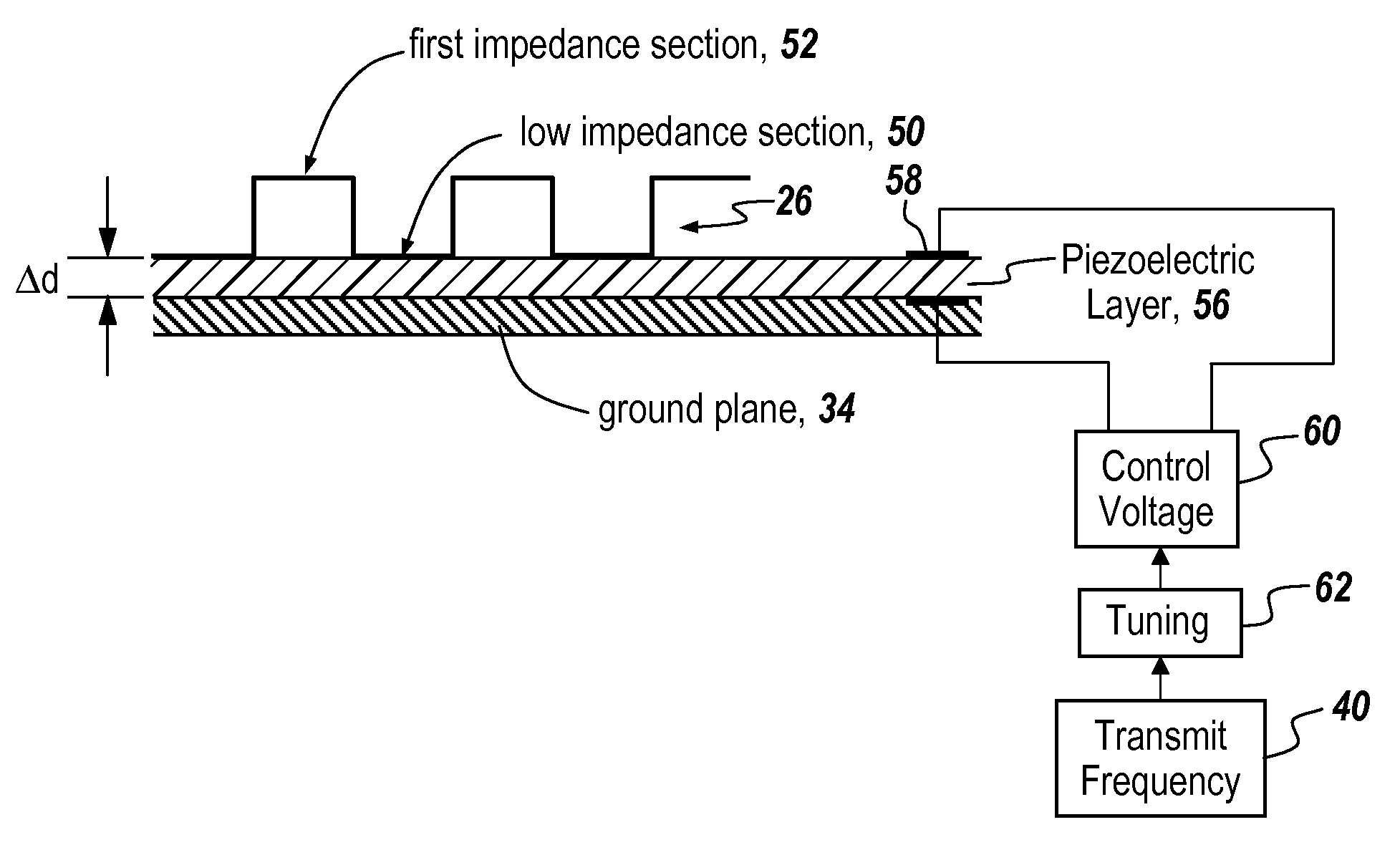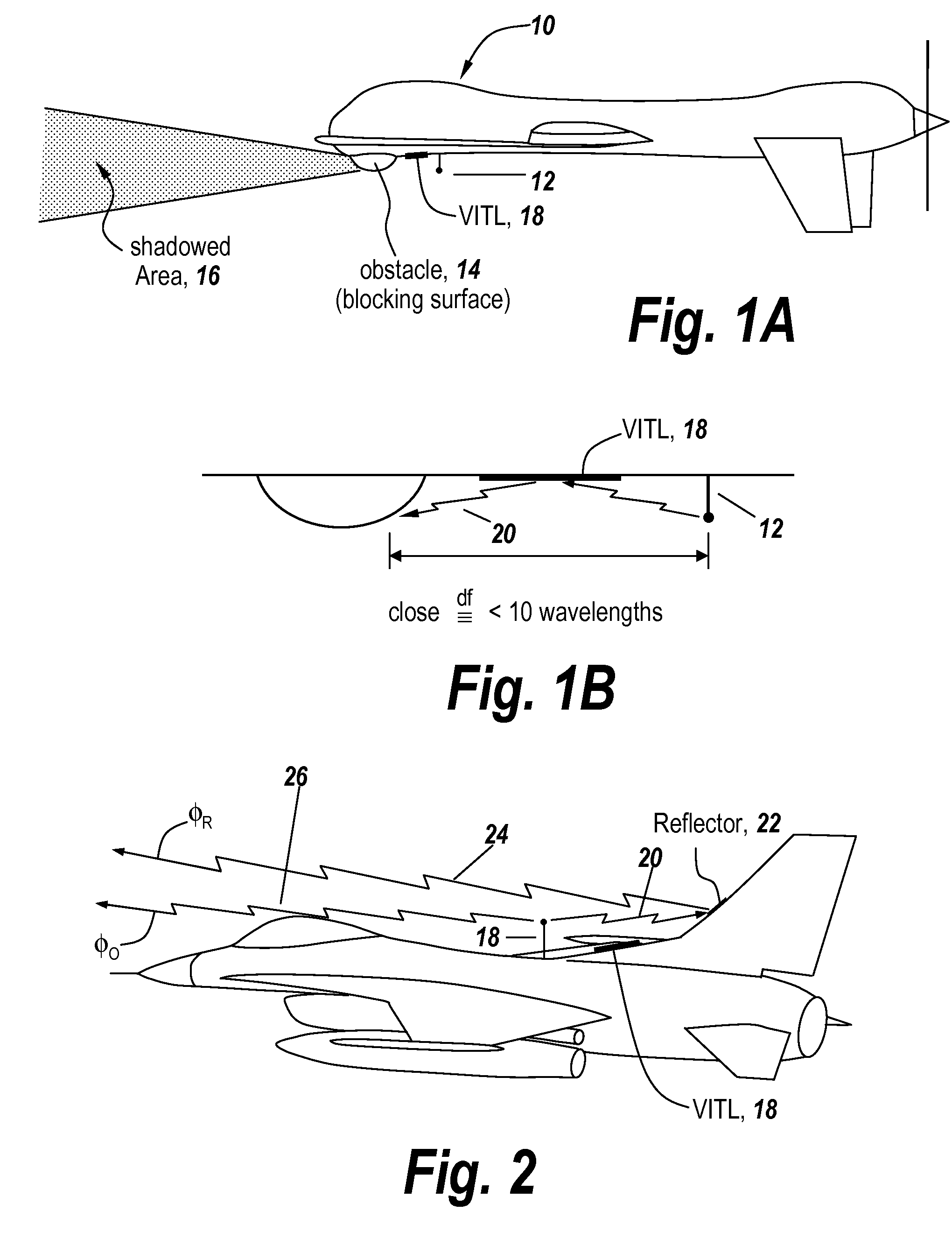Method and apparatus for avoiding pattern blockage due to scatter
a scattering and pattern technology, applied in the direction of electrical equipment, antennas, antenna couplings, etc., can solve the problems of inability to locate antennas on airborne platforms, inability to place materials of appropriate thickness and orientation on objects, and inability to add extra antennas to cover these poorly illuminated areas. , to achieve the effect of minimizing the shadow caused by the structure, less deformation, and more delay
- Summary
- Abstract
- Description
- Claims
- Application Information
AI Technical Summary
Benefits of technology
Problems solved by technology
Method used
Image
Examples
Embodiment Construction
[0041]Referring now to FIG. 1A, an aircraft 10 may be provided with an antenna 12 which is closely spaced to an obstacle 14 that constitutes a blocking surface such that radiation from antenna 12 is blocked by obstacle 14 to provide a shadowed area 16 in the far field. As will be discussed, an artificial surface in the form of a meanderline or VITL 18 is interposed between antenna 12 and obstacle 14, the purpose of which is to alter the phase of the energy that travels down the meanderline and towards the obstacle. As will be described it is the purpose of the meanderline or VITL 18 to alter the phase of the signal which is captured and reradiated towards the obstacle.
[0042]It will be noted that the meanderline or VITL is a slow wave structure which in one embodiment is an array of meanderlines.
[0043]The blocking situation depicted in FIG. 1A is depicted in FIG. 1B and is a result of the antenna being close to the obstruction, for instance less than 10 wavelengths. Of course the clo...
PUM
 Login to View More
Login to View More Abstract
Description
Claims
Application Information
 Login to View More
Login to View More - R&D
- Intellectual Property
- Life Sciences
- Materials
- Tech Scout
- Unparalleled Data Quality
- Higher Quality Content
- 60% Fewer Hallucinations
Browse by: Latest US Patents, China's latest patents, Technical Efficacy Thesaurus, Application Domain, Technology Topic, Popular Technical Reports.
© 2025 PatSnap. All rights reserved.Legal|Privacy policy|Modern Slavery Act Transparency Statement|Sitemap|About US| Contact US: help@patsnap.com



